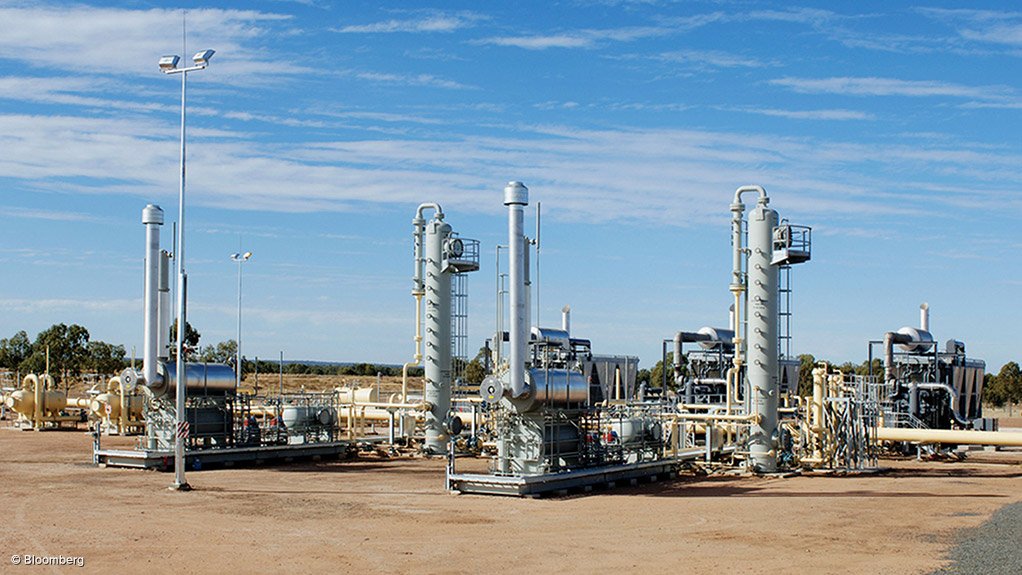PERTH (miningweekly.com) – A new report by independent energy consultancy EnergyQuest has revealed that instead of driving a gas investment boom, high energy prices on Australia’s east coast are in fact resulting in lower underlying gas demand.
EnergyQuest CEO Dr Graeme Bethune on Tuesday said that total east coast domestic gas demand fell by 2.5% in the March quarter, compared with the same period last year, while underlying gas demand was falling at a much higher rate.
Excluding gas used for power generation, underlying gas consumption fell by 8%. If gas used to fuel Queensland’s liquefied natural gas (LNG) plants is excluded, consumption dropped by 16%.
This was in the face of an average east coast gas price of A$9.95/GJ in the first quarter of 2017, which was double that of a year earlier.
Bethune pointed out on Tuesday that the major fall in the oil price was also impacting gas development in Australia.
“After the price rallying to around $55/bbl following the OPEC meeting in November last year, the price is now softening in the face of rising US production. Australian gas development is likely to remain constrained by a sustained low oil price.
“As a result, there is a risk that the problems on the east coast are long term, not short term,” Bethune said.
”There are significant undeveloped gas resources in the Cooper basin and New South Wales but development of the former is constrained by the low oil price and the latter by Lock the Gate.”
Bethune said federal government initiatives on the east coast gas crisis were welcome and the Prime Minister’s involvement appeared to be having positive results with some producers.
“However, there appears to be a view that the LNG projects are sucking vast volumes of gas from the domestic market and all would be well if this is stopped. This view is incorrect for two reasons.
“Firstly, the sale of Santos Cooper Basin gas to Gladstone LNG was all signed off in 2010, nearly seven years ago, without any obvious government concerns. The horse has well and truly bolted so far as that gas goes.
“Secondly, a substantial volume of other third-party gas contracted to the Santos-operated Gladstone LNG project appears to originate from other LNG projects and was never developed for domestic gas. Gas bought from third parties is not necessarily taking gas from the domestic market.
“Overall, it is likely that the net draw of the new east coast LNG terminals on domestic gas supplies is quite modest.”
Edited by: Creamer Media Reporter
EMAIL THIS ARTICLE SAVE THIS ARTICLE
ARTICLE ENQUIRY
To subscribe email subscriptions@creamermedia.co.za or click here
To advertise email advertising@creamermedia.co.za or click here













